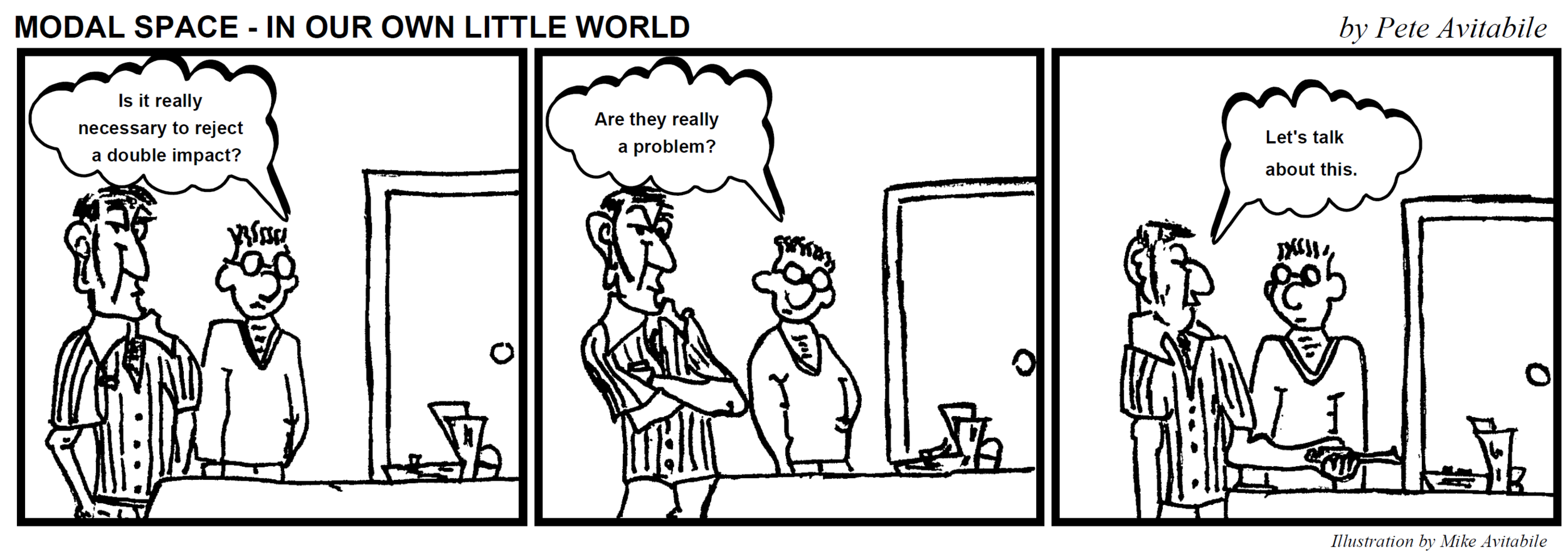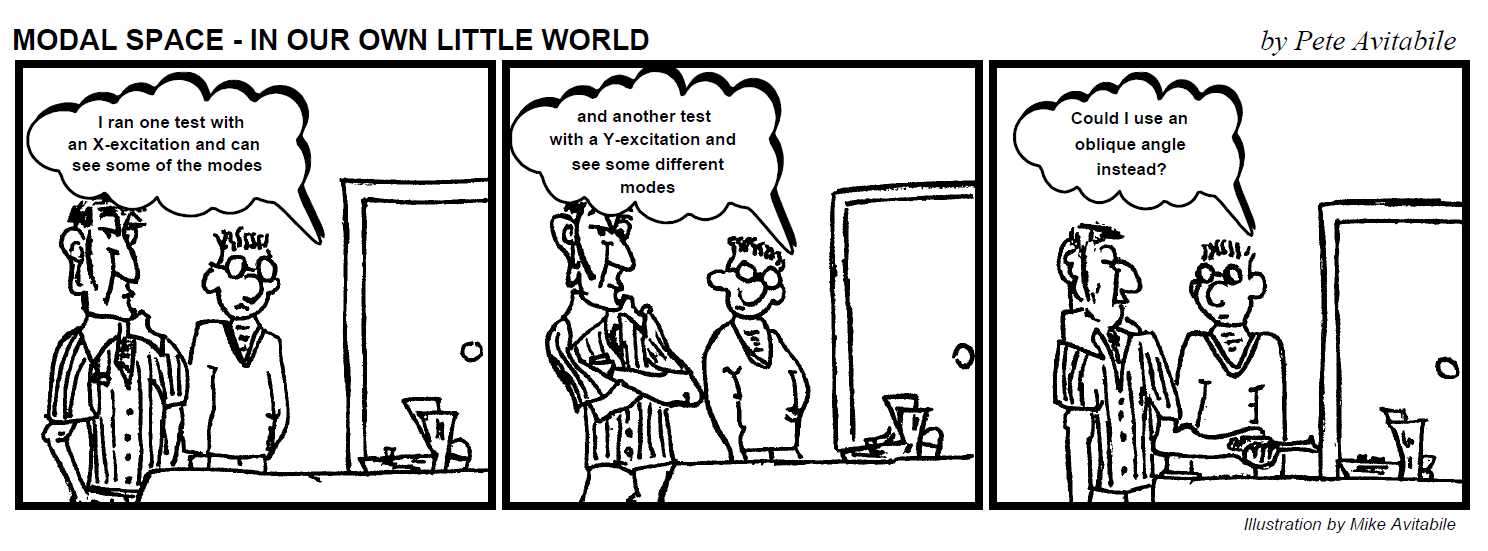Sure…sometimes it helps to stand back and look at everything from a complete picture. I have a figure that I have used for many years now to help people see things more clearly. I call it "The Big Picture". Let's just look at this picture and discuss all the pieces individually.
Read MoreThere must be more to this problem than what was stated by your question. My guess is that you are performing a modal test on a structure but you are not measuring all the significant modally active portions of the system during the modal test.
Read MoreWhy can’t I run a modal test with one big shaker and just “crank up the signal”?
That isn’t a good idea - Let’s discuss this.
OK – so we need to talk about a few things here. Many times people who get involved in modal testing sometimes come from the “vibration qualification world” and have a completely different mentality compared to the “modal world”.
Read MoreCan the test setup have an effect on the measured modal data?
Do the setup boundary conditions and accelerometers have an effect?
Most definitely!!!!! Let's discuss this.
Read MoreIf we perform a roving impact hammer test and impact many points, is there any possibility of missing a mode? Well… you need to be careful where you place the accelerometer.
Read MoreWhich shaker excitation is best? Is there any difference? Well ... that's a good question. Let's talk about the different techniques.
Let's discuss the most commonly used excitation techniques for modal analysis today. These are random, burst random, sine chirp and digital stepped sine. But before we discuss the excitation techniques themselves, there are a few basics that we need to discuss first. Let's try to categorize the different techniques and explain when to use which technique. First of all, let's break up the excitations into deterministic and non-deterministic (or random) excitations.
Read MoreWell, this is an area where I find people often get confused. Many times I hear people say that they have to tweak and tune the excitation frequency so that they get the excitation right at the natural frequency otherwise the frequency will not be identified properly. I also hear people say that the excitation method must have broadband energy at all frequencies otherwise the system will not be excited properly.
Read MoreIs there a difference between a roving hammer and roving accelerometer test? Well ... it depends. Let's explain what the differences could be.
Read MoreWhat are some of the major mistakes people make in modal tests so I don't make the same ones. Let's talk about some of them.
Read MoreIs there any real advantage to MIMO testing?
Why not just use SISO and then move the shaker? Let's talk about the differences.
Multiple input multiple output (MIMO) testing has many advantages when compared to data collected from single input single output (SISO) testing. The energy from multiple shakers allows the structure to be more uniformly excited throughout the entire structure and thus allows for the development of better frequency response functions (FRF).
Read MoreHow many points are enough when running a modal test? Let's discuss this.
I expected that eventually you would get around to asking me that question. Its another one that I get asked all the time. Basically the simplest answer is that you need to measure a sufficient number of points so that you can uniquely describe the mode shape. This answer may not be completely obvious. We need to talk about this a little more. Let's start with a simple structure that we have discussed before. The simple plate structure.
Read MoreHow do you select the reference location for a modal test? What needs to be considered? Let's discuss this to see how to think about this.
Read MoreIs it really necessary to reject a double impact?
Are they really a problem?
Let's talk about this.
I know that many people will say that a double impact is totally unacceptable. It is not the optimum condition for collecting impact data for a modal test. However, under certain circumstances, it may be reasonable to accept a measurement that has resulted from a double impact. Let's discuss this problem that may arise when a double impact occurs and explain how to determine if the measurement is acceptable or not.
Read MoreI ran one test with an x-excitation and can see some modes and another test with a y-excitation and see some different modes. Could I use an oblique angle instead?
Well, that's a very good question. Its one that comes up often in terms of running modal tests with a shaker excitation. Of course it is totally acceptable to run one test with a shaker at some oblique angle to the structure. But the only thing we need to be careful about is to assure that we don't select the reference point at the node of a mode.
Read MoreCould you explain the difference between time domain, frequency domain and modal space? I hear it all the time but I'm not sure what's the difference.
There's a lot to explain but let's start with something simple.
Read More
















